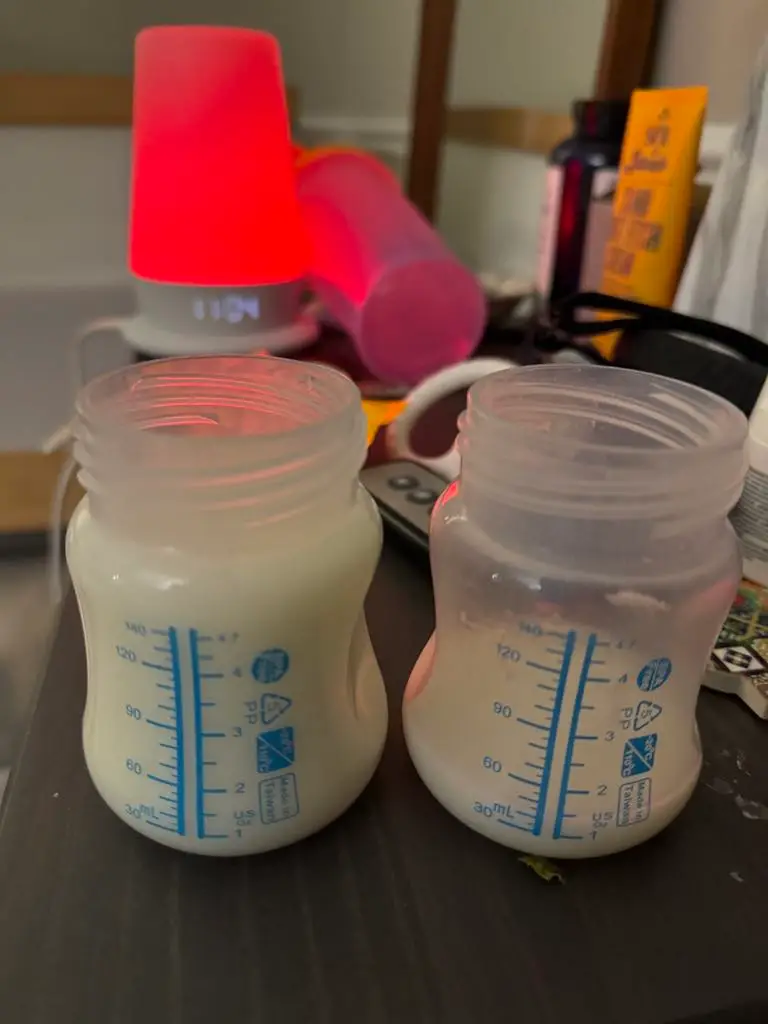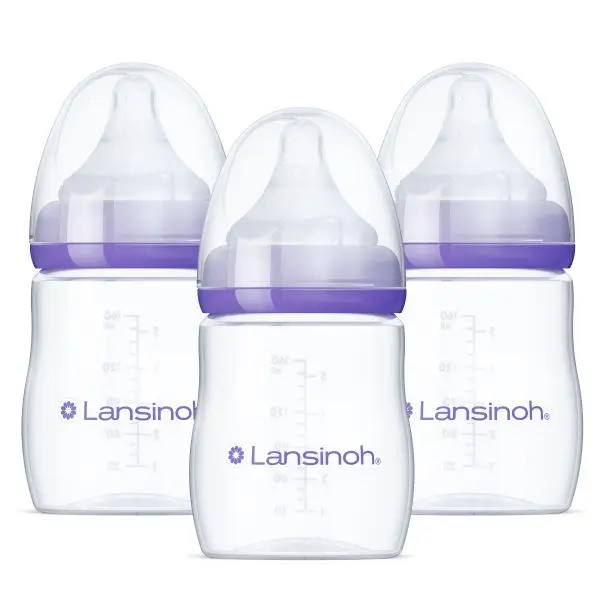First off, mama and papa, congratulations! So excited for you and your little one. Now, I have to say that although most things I’ve heard about pregnancy and parenthood have been an exaggeration, this one is not. Breastfeeding is really difficult and the first days of breastfeeding will feel overwhelming. But the good news is you can prepare for it by learning about the common challenges that you’ll be ready for because you read this breastfeeding survival guide.
I am not a lactation consultant! But I have had four by the time I was ready to breastfeed on my own. Even if you fact check everything here (which I invite you to do), I know it’ll help you narrow down the most important information for your journey.
This is such a big topic. I plan to update this post with more links to deep dives that’ll be helpful to breastfeeding mamas. For now, whether you’re a first-time parent or just need a refresher, here’s a practical guide to what to do before delivery, in the first week postpartum, and how to support milk supply during those crucial early days.
💼 Pre-Delivery Prep
Before baby arrives, there are a few things you can do to set yourself up for success:
- Book a lactation consultant through The Lactation Network (many insurances cover this; check eligibility early!). Try to schedule a visit within the first week postpartum.
- Buy a nipple sizer to measure your nipples. This helps you get the right flange size for pumping.
- Get the essentials: a good pumping bra, a quality breast pump, and correctly sized flanges.
- Invest in a supportive nursing pillow like My Brest Friend. (I found the Boppy too soft in the early weeks when my baby was very small.)
- Set up your pump at home and experiment with different settings before baby arrives.
🍼 The First Week: Breastfeeding Survival Guide
The First 7 Days Are Crucial
- This is when your body learns to make milk. Nursing frequently sends the signal to start production.
- Milk “comes in” around day 3–5.
- Consistency matters: Skipping even one session in the early days can affect long-term supply. (I learned this the hard way. Uneven pumping caused one breast to drop in production permanently. I now pump 4 oz in my left boob and 1 oz in my right boob, even though my right breast used to produce 4 oz as well.)
- Nurse every 2–3 hours, even at night. Yes, it’ll feel inhumane especially right after delivery, but it’s what my lactation consultants recommended for me to establish my supply. I’m so sorry!

Tips for Early Success
- Skin-to-skin contact right after birth helps stimulate milk production and promotes bonding.
- Limit nursing sessions to 15 minutes per breast. After 30 minutes total, babies may burn more calories than they’re taking in.
- Hospital lactation consultants are there to help. Please ask them to guide you through positioning and latch.
👶 Postpartum: What to Do in the First Week
Immediately After Birth
- Place your baby naked on your bare chest for at least the first hour (uninterrupted if possible). This “golden hour” is vital for bonding and milk stimulation. See research section for key findings.
- Encourage your baby to find the nipple and latch. It might feel intimidating, especially with a fragile newborn. Please ask a nurse for help if needed.
Day-by-Day Plan
- Day 1–2: Nurse frequently. Try pumping once or twice just to see how much colostrum is coming in and ensure stimulation even if baby isn’t latching well.
- Day 3: If your milk hasn’t come in yet, start triple feeding:
- Nurse for 30 minutes
- Pump for 15 minutes
- Feed baby pumped milk or formula if needed
- Days 4–7: Continue triple feeding until you reach one of two goals:
1. Baby Is Gaining Weight Well
- Gaining ~0.5–1 oz per day (after regaining birth weight)
- Pediatrician or lactation consultant confirms growth is on track
2. Your Milk Supply Is Established
- Producing ~24–30 oz/day by 4 weeks
- Breasts feel full before a feed, soft afterward
- You hear baby swallowing and baby seems content after nursing
💡 Bonus Tips
- Milk removal = milk production. Don’t skip sessions!
- Undersupply is more common than oversupply, usually due to not enough stimulation in the early days.
- If you’re overproducing (more than your baby eats in 24 hours), adjust your approach to avoid discomfort or clogged ducts.
- Just be aware that feeding demands ramp up quickly. By 3 months, expect baby to take about 5 oz per feed.
🔧 Troubleshooting
- Latches should not be painful. Ask for help otherwise nipple trauma is almost guaranteed due to frequency.
- If you’re not sure how much milk your baby is taking in, ask lactation consultant for a weighted feed.
- Make sure you’re using the appropriate nipple type for newborns if you’re bottle feeding in the early days.
- Reflux and gassiness could be an oral tie issue; check with pediatric dentist/lactation consultant.
- Baby’s expected milk intake actually changes by day! Refer to milk intake chart below.
⭐️ Extra Credit: Helpful Things to Learn Ahead of Time
- Most globally trusted resource for breastfeeding: https://llli.org/
- Colostrum harvesting
- How to hold baby for breastfeeding
- What to look for in a good latch
- Bottles that support breastfeeding
- Clogged ducts and how to treat them
- heat is outdated
- reduce inflamation is latest guidance
- How dads and partners can help
- Things that I needed eventually but not right away:
- silverettes
- nipple cream
- breast ice pack
📊 Key Research Findings for Skin to Skin
1. Increased Milk Supply & Earlier Lactogenesis II
- Skin-to-skin contact has been shown to speed up the onset of lactogenesis II (the copious production of milk), typically marked by breast fullness around 48–72 hours postpartum.
- A study by Moore et al. (2016) found that women who had early skin-to-skin contact were significantly more likely to have earlier and more effective milk production.
2. Improved Breastfeeding Outcomes
- UNICEF and WHO guidelines advocate for immediate skin-to-skin contact due to its role in initiating breastfeeding.
- A 2016 Cochrane review concluded that early skin-to-skin contact leads to longer and more successful breastfeeding, including higher exclusivity rates at 1–4 months.
3. Oxytocin Release Enhances Milk Ejection Reflex
- Skin-to-skin contact increases maternal oxytocin levels, which not only aids bonding but also enhances milk letdown.
- This hormonal response is key to establishing and maintaining a healthy milk supply.
4. Greater Infant Latch and Suckling Behavior
- Newborns placed skin-to-skin often begin the breast crawl, finding the nipple and self-latching.
- This early stimulation of the breast improves early milk removal, which is directly related to ongoing milk supply.
🗓 Newborn Milk Intake Chart (Birth–4 Weeks)
| Age | Per Feeding | Total per Day | Notes |
|---|---|---|---|
| Day 1 | 5–7 mL (1–1.5 tsp) | 30–60 mL (1–2 oz) | Stomach size of a marble; colostrum only |
| Day 2 | 10–15 mL (2–3 tsp) | 150–180 mL (5–6 oz) | Feeding 8–12x/day |
| Day 3 | 15–30 mL (0.5–1 oz) | 200–300 mL (7–10 oz) | Milk may begin to come in |
| Day 4–5 | 30–60 mL (1–2 oz) | 400–500 mL (13–17 oz) | Continue frequent feeding (every 2–3 hours) |
| End of Week 1 | 45–90 mL (1.5–3 oz) | 500–700 mL (17–24 oz) | Breast should feel fuller, baby swallowing more clearly |
| Week 2–3 | 60–90 mL (2–3 oz) | 650–850 mL (22–29 oz) | Baby may sleep slightly longer between feeds |
| Week 4 | 90–120 mL (3–4 oz) | 700–900 mL (24–30 oz) | Around 7–9 feeds per day; stomach size is now ~walnut-sized |







Leave a Reply